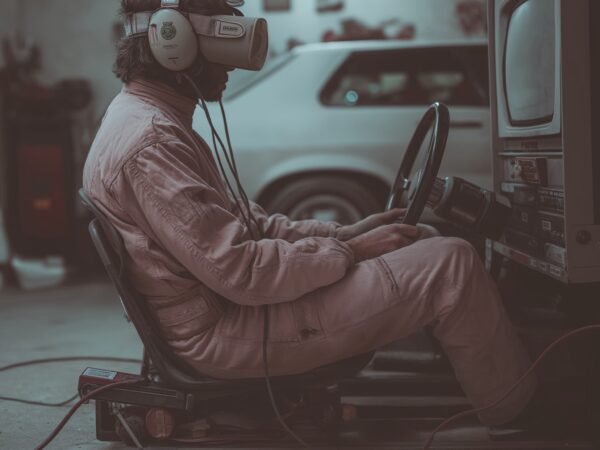Technological advancements are rapidly reshaping every aspect of human life, and the world of sports is no exception. Among the most revolutionary innovations making waves today is virtual reality (VR) — a technology that simulates immersive environments through the use of headsets, sensors, and specialized software.
Initially associated with gaming and entertainment, VR is now proving to be a powerful tool in the domain of athletic performance, sports education, and injury rehabilitation.
This article explores how VR is transforming sports training, optimizing athlete development, and redefining the future of sports science.
Enhancing Cognitive and Tactical Skills
In many sports, success is determined not just by physical ability but also by strategic decision-making, situational awareness, and mental sharpness. VR offers athletes an opportunity to simulate complex game scenarios without the physical demands or risks associated with real matches.
For example, quarterbacks in American football can practice reading defensive formations and making split-second decisions through VR simulations. Soccer players can visualize different attacking strategies or penalty scenarios from a first-person perspective, training their mental agility.
By allowing athletes to rehearse mentally while physically resting, VR provides a low-risk method to sharpen tactical understanding and cognitive reaction times — crucial factors that can determine victory or defeat.
Improving Technical Proficiency
Precision and technique are fundamental to mastering any sport. VR-based training programs now enable athletes to fine-tune their motor skills by practicing highly specific movements in controlled environments.
Consider golfers who can virtually practice their swing mechanics on simulated courses or tennis players who can refine their serve accuracy using detailed performance analytics generated in real-time.
VR systems offer instant feedback on aspects such as movement patterns, timing, and force application, allowing athletes to make micro-adjustments that would be difficult to perceive without technological assistance.
This precise feedback loop accelerates technical development far beyond traditional methods.
Providing Realistic, Low-Risk Practice Opportunities
Training in certain sports often carries a risk of injury, particularly in high-contact disciplines like rugby, boxing, or martial arts. VR enables athletes to simulate game-like conditions without the associated physical impact, providing a safe alternative for high-risk drills.
For instance, a boxer can practice defensive maneuvers and sparring strategies against a virtual opponent, enhancing reaction time and defensive instincts without suffering physical blows.
Moreover, sports involving dangerous environments — such as motorsports or skiing — can leverage VR to replicate competitive conditions for skill refinement and psychological acclimatization while minimizing injury risks.
Facilitating Injury Rehabilitation and Recovery
Injury recovery is one of the most delicate phases in an athlete’s career. VR is increasingly used in sports medicine and physiotherapy to aid rehabilitation processes.
Athletes recovering from injuries can engage in VR-driven rehabilitation programs that offer gradual, adaptive physical challenges. These simulations not only help rebuild strength and mobility but also restore confidence — an often overlooked but critical factor in full recovery.
By gamifying rehabilitation exercises and providing a sense of immersion, VR can make therapy sessions more engaging, motivating athletes to stay consistent with their recovery routines.
Psychological Training and Visualization Techniques
Elite performance in sports requires mental resilience, confidence, and focus. VR provides unique opportunities for mental conditioning by allowing athletes to experience visualization exercises in fully immersive settings.
Instead of merely imagining stepping onto a court or track, athletes can “live” these moments through VR. This exposure training helps reduce anxiety, manage performance nerves, and build psychological endurance under simulated pressure.
VR can replicate crowd noise, stadium lighting, and competition scenarios, creating an environment that strengthens the mental toughness essential for high-level performance.
Expanding Access to Coaching and Expertise
VR is also democratizing access to elite coaching resources.
In many regions, athletes lack proximity to specialized trainers or world-class facilities. VR platforms can now connect athletes to virtual coaching programs, where they receive tailored instructions, performance analyses, and real-time feedback — all from the comfort of their local training centers.
Remote coaching via VR bridges geographical gaps, allowing young athletes to benefit from expertise that would otherwise be inaccessible, thus leveling the playing field for global talent development.
Challenges and Considerations
Despite its promise, VR sports training is not without limitations:
- High costs associated with VR hardware, software, and maintenance can restrict widespread adoption, particularly for amateur athletes and small sports organizations.
- Technical limitations such as lag, lower resolution, or lack of precise haptic feedback can reduce training realism.
- Physical fatigue and motion sickness (VR sickness) remain challenges, especially for long-duration sessions.
However, as technology continues to advance — with lighter headsets, better graphics, and improved user interfaces — these obstacles are gradually being overcome.
The Future of VR in Sports
As virtual reality becomes more sophisticated, we can expect even deeper integration into sports ecosystems. Future innovations may include:
- Full-body tracking suits for hyper-realistic motion analysis.
- AI-driven adaptive training modules that personalize drills in real-time based on athlete performance.
- Social VR platforms for team practice sessions, strategy meetings, and fan engagement experiences.
Moreover, VR may eventually merge with augmented reality (AR) and mixed reality (MR) technologies to create seamless blended training environments, providing the best of both virtual and real-world benefits.
Conclusion
Virtual reality is no longer a futuristic concept in the realm of sports training; it is a transformative reality reshaping how athletes prepare, perform, and recover.
From cognitive skill development and injury prevention to technical mastery and psychological conditioning, VR offers unparalleled tools for enhancing every facet of athletic growth.
As access to VR becomes broader and its applications more refined, it is set to become an indispensable asset not only for elite competitors but for athletes at every level.
In the coming years, those who embrace VR-driven training will likely stand at the forefront of sporting excellence — mastering both the physical and the virtual dimensions of human potential.
